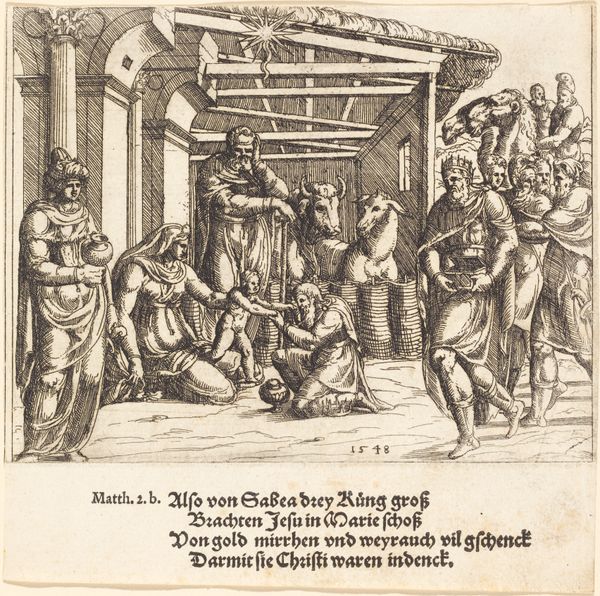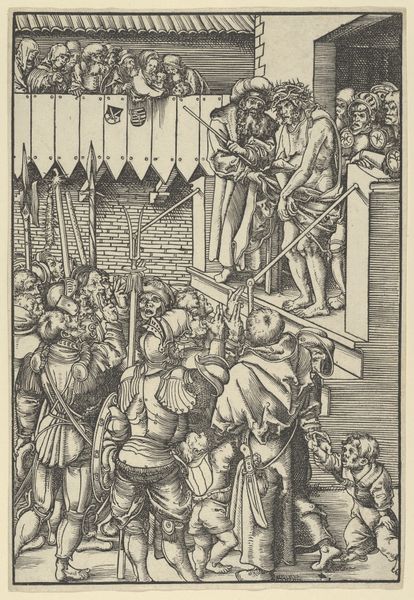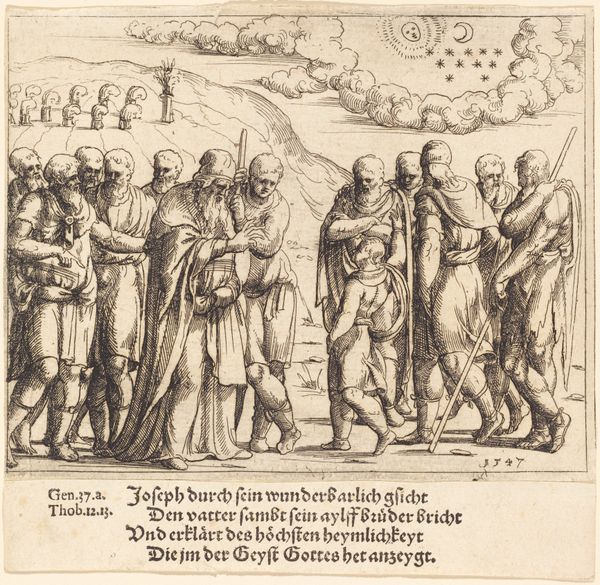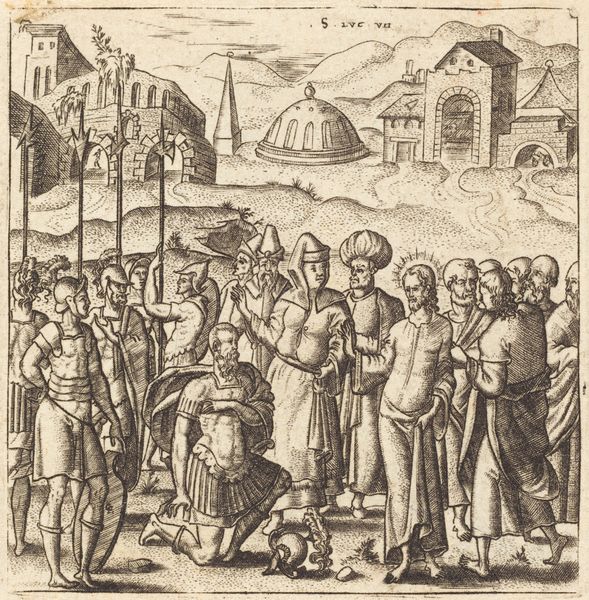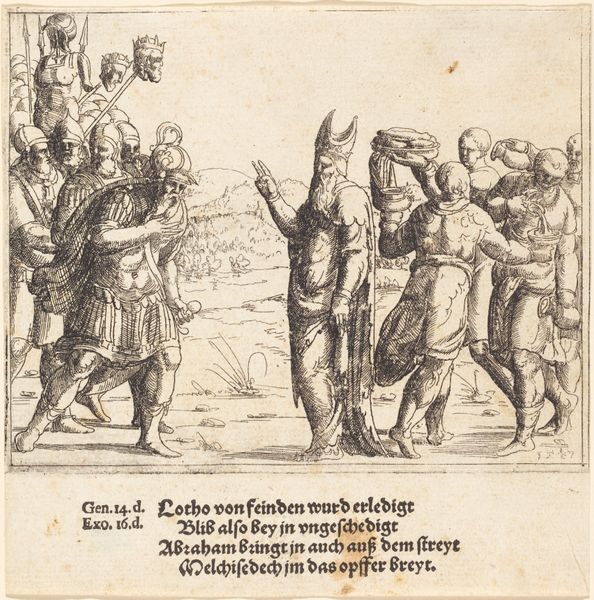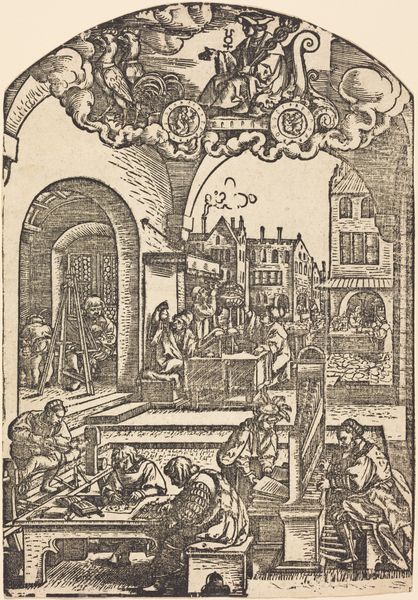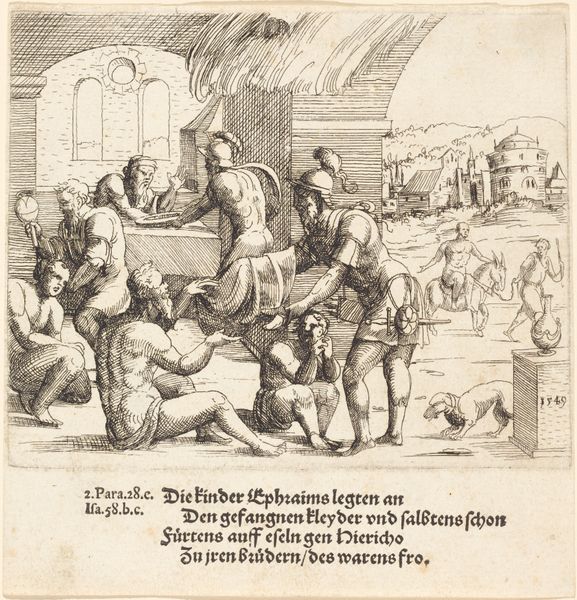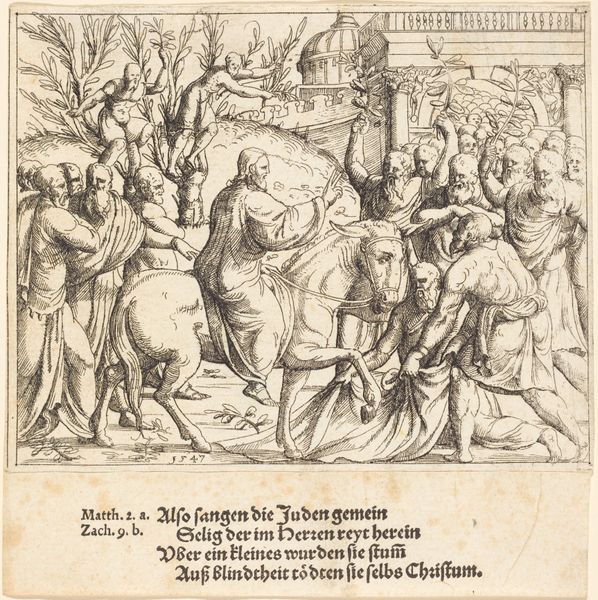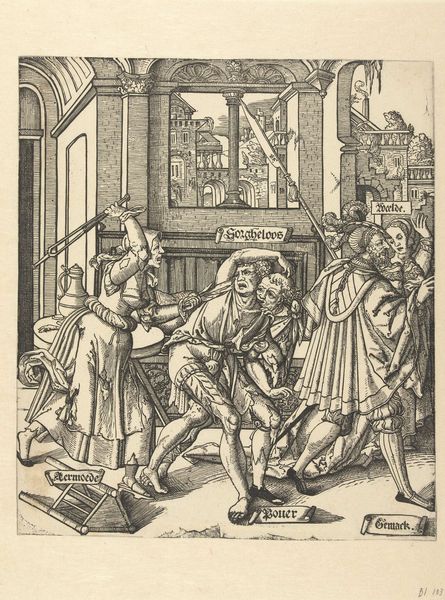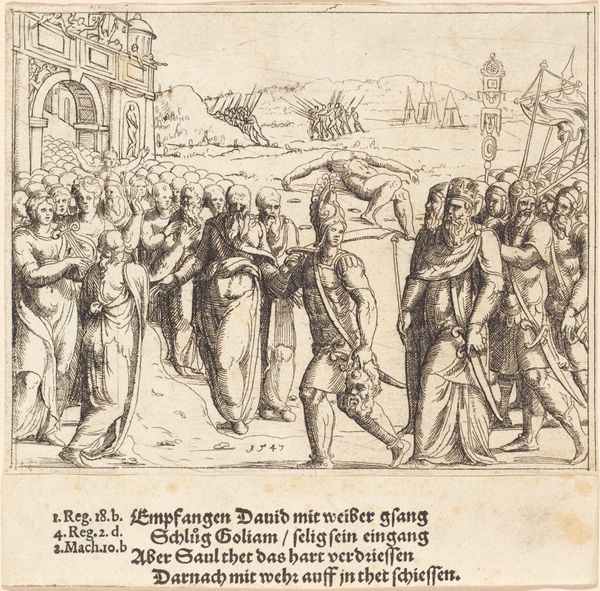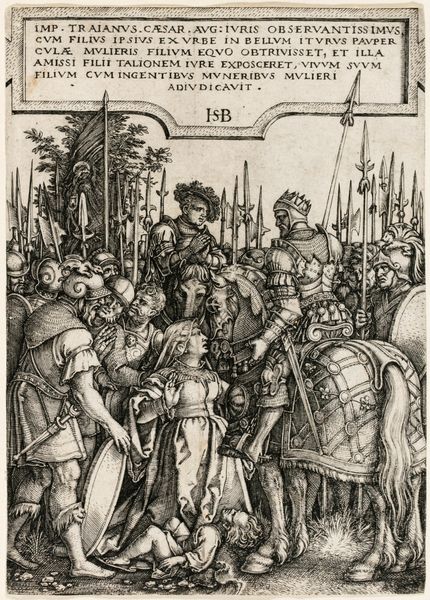
drawing, print, engraving
#
drawing
#
aged paper
#
toned paper
# print
#
sketch book
#
figuration
#
11_renaissance
#
personal sketchbook
#
sketchwork
#
journal
#
line
#
pen work
#
sketchbook drawing
#
history-painting
#
storyboard and sketchbook work
#
sketchbook art
#
engraving
Copyright: National Gallery of Art: CC0 1.0
Augustin Hirschvogel created this print, "Ecce Homo," in 1549, capturing a pivotal scene from the Gospels. The image presents Pontius Pilate displaying Christ to a crowd, inviting them to decide his fate. Made in the midst of the Reformation, a period of intense religious and social upheaval in Europe, this print participates in a visual culture grappling with questions of authority, justice, and faith. Hirschvogel's image is rich with historical associations. The architectural backdrop evokes a Northern European city, reflecting the artist's own context, and drawing parallels between the biblical narrative and contemporary society. Consider the role of printmaking during this time. The ability to produce and disseminate images widely allowed for new forms of religious expression and debate. Was Hirschvogel’s print intended as a devotional aid, a commentary on religious authority, or perhaps both? To fully understand this work, a historian might consider the history of printmaking, religious movements, and the social context of 16th-century Europe. Only then can we more fully appreciate how art, as an aesthetic creation, is always contingent on historical circumstance.
Comments
No comments
Be the first to comment and join the conversation on the ultimate creative platform.
